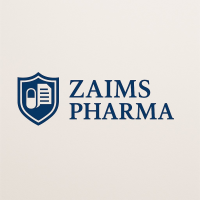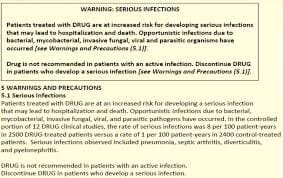|
Getting your Trinity Audio player ready... |
Information about Nitrosamine Impurities 2024 in API and finished pharmaceutical products
Nitrosamine Impurities: The FDA has released a revised guidance titled “Control of Nitrosamine Impurities in Human Drugs,” which outlines the agency’s updated approach to how drug manufacturers and applicants can identify and prevent unacceptable levels of nitrosamine impurities in their products, including nitrosamine drug substance-related impurities (NDSRIs). This updated guidance also includes a timeline for manufacturers to follow when implementing these recommendations.
The FDA issued new guidance, “Recommended Acceptable Intake Limits for Nitrosamine Drug Substance-Related Impurities (NDSRIs),” which offers drug manufacturers and applicants a suggested framework for conducting a risk-based safety assessment of NDSRIs. This framework applies to both approved and marketed drug products, as well as those currently under FDA review.
Nitrosamine Impurities latest update
Background
The presence of the nitrosamine impurity N-nitrosodimethylamine (NDMA) was first detected in medications containing valsartan, an Angiotensin II Receptor Blocker (ARB), in July 2018. Valsartan is part of a class of drugs commonly known as the sartans, which are analogues of each other.
Following the discovery of NDMA, additional nitrosamine impurities were identified in other medications within the sartan family, including:
- N-nitrosodiethylamine (NDEA)
- N-nitrosodiisopropylamine (NDIPA)
- N-nitrosoethylisopropylamine (NEIPA)
- N-nitroso-N-methyl-4-aminobutyric acid (NMBA)
More recently, nitrosamine contaminants have also been found in products containing pioglitazone and ranitidine.
What Are Nitrosamines?
Nitrosamines, or more precisely N-nitrosoamines, are a group of compounds that contain the nitroso functional group (NO). These substances are of particular concern because nitrosamine impurities are classified as probable human carcinogens. While nitrosamines can naturally occur in certain foods and drinking water, their presence in medications is deemed unacceptable due to the potential health risks.
One example of a nitrosamine is nitrosodimethylamine (NDMA), a substance that has been detected in various pharmaceutical products and is known for its carcinogenic potential.
Why Are Nitrosamines Present?
Nitrosamines form when secondary or tertiary amines react with nitrous acid. Although nitrous acid is unstable, it can be generated in situ from nitrites (NO₂) under acidic conditions.
In the case of the sartan drugs, many of which contain a tetrazole ring, the formation of this ring often involves the use of sodium nitrite. At the same time, some solvents used in the synthesis process contained amines, or had trace amounts of amines, which likely contributed to the formation of nitrosamines such as NDMA and NDEA. The source of NDMA in ranitidine, however, remains unclear.
Further investigations have revealed that the potential for nitrosamine contamination is not limited to just the presence of nitrites and amines in the synthesis of the active pharmaceutical ingredient (API). It appears that nitrites or amines can unintentionally be introduced as contaminants in starting materials, reagents, and solvents. For example, dimethylamine, found in the solvent dimethyl formamide (DMF), can serve as a precursor for nitrosamine formation. Additionally, nitrosamine formation can occur from the carryover of nitrites or amines during subsequent production steps.
Another important source of nitrosamine contamination is recycled materials and solvents, which may already contain nitrosamines or impurities that could later form nitrosamines. An example of this is the use of recycled DMF, which may be treated with sodium nitrite to neutralize residual azides. Recycling processes, often managed by third-party contractors, may not always ensure thorough cleaning between batches, leading to cross-contamination of nitrosamines.
Importantly, these mechanisms of contamination are not limited to specific drugs but could affect a wide range of products that might not otherwise be considered at risk for nitrosamine formation. These broader concerns have led the European Medicines Agency (EMA) to require that Marketing Authorisation Holders (MAHs) of all Finished Pharmaceutical Products (FPPs) conduct comprehensive risk assessments to evaluate the potential for nitrosamine contamination.
Toxicity
NDMA and NDEA are part of a group known as the \”cohort of concern,\” which includes highly potent mutagenic carcinogens that the World Health Organization’s International Agency for Research on Cancer (IARC) has classified as likely human carcinogens. Despite the potency of these substances, the risk of cancer from nitrosamine impurities at the concentrations typically found is considered very low.
There is limited specific toxicity data available for NDMA and NDEA. However, based on the available information, many major regulatory agencies have established interim acceptable intake levels for these impurities, as shown in Table 1.
Due to their similar chemical structures, NDIPA, NEIPA, and NMBA are regarded by international regulators as having a toxicological profile comparable to that of NDMA and NDEA.
For nitrosamine impurities not listed in Table 1, the guidelines provided in ICH’s M7(R1) should be followed to determine an acceptable intake. Notably, at least one nitrosamine related to valsartan has been shown to be negative in the Ames test.
Regulatory Action
In the European Union (EU), following an Article 31 review of sartans that may contain nitrosamine impurities (specifically those with a tetrazole ring), manufacturers were instructed to evaluate and modify their production processes to minimize the presence of nitrosamines as much as possible. A two-year transition period was granted for these changes. During this time, interim limits, as outlined in Table 1, are applied to products. Products that exceed these limits for a single impurity or contain both NDMA and NDEA are not permitted in the EU.
The European Pharmacopoeia is being updated to include nitrosamine testing in the monographs for sartan drugs. Additionally, the general monograph for active pharmaceutical ingredients (API) (General monograph 2034) is being revised to incorporate suitable testing for nitrosamines.
As a result of these actions, several sartan products were temporarily recalled from the EU market. Many have since returned, although patients were advised not to discontinue their treatments unless directed to do so by their healthcare provider or pharmacist.
Similarly, the U.S. Food and Drug Administration (USFDA) took steps to identify and recall medicines with nitrosamine levels above the interim acceptable limits. The USFDA has published a list of ARB products and their nitrosamine content status. As with the European Medicines Agency (EMA), the USFDA emphasized that the risks associated with abruptly stopping these medications (such as an increased risk of stroke) are far greater than the low risk posed by continuing to use the medicines with nitrosamine impurities.
More recently, NDMA has been detected in certain batches of ranitidine and nizatidine products. These medications are commonly used to reduce stomach acid in conditions like heartburn and ulcers and are available both over-the-counter and by prescription. Regulatory responses have varied by jurisdiction. Some national regulators in Europe, along with Swissmedic and Health Canada, have taken precautionary measures, including recalling or suspending the distribution of ranitidine products until testing shows that NDMA levels are below acceptable thresholds. The EMA is currently reviewing available data to assess any potential risks to patients using ranitidine.
In contrast, the USFDA has only requested voluntary recalls for ranitidine products where NDMA levels exceed the interim limits. The USFDA has stated that the NDMA levels found in most ranitidine and nizatidine products are comparable to those typically found in common foods like grilled or smoked meats.
Many companies have initiated voluntary recalls of their ranitidine products as a precautionary measure.
Additionally, the EMA has asked marketing authorization holders (MAHs) of all finished pharmaceutical products (FPPs) to evaluate the potential presence of nitrosamines in all medicines containing chemically synthesized active ingredients. While nitrosamines are not expected to form during the production of most medicines, the possibility of cross-contamination or unintentional introduction of amines and nitrites has prompted the EMA to recommend that companies conduct this precautionary review. The scope of these reviews should encompass all aspects of the manufacturing process, including the production of finished pharmaceutical products. The EMA has requested that these evaluations be completed within six months.
Test Methods
The detection of nitrosamine impurities at very low concentrations presents significant challenges for testing. To assist with this, the U.S. Food and Drug Administration (USFDA) has published a number of test methods for determining nitrosamine content in both active pharmaceutical ingredients (APIs) and finished pharmaceutical products (FPPs).
The USFDA has provided the following test methods for reference:
For the testing of ranitidine, the USFDA recommends using a Liquid Chromatography with High-Resolution Mass Spectrometry (LC-HRMS) method due to its suitability for lower temperature conditions. Some higher-temperature methods can lead to the formation of NDMA during the testing process.
Similarly, the Official Medicines Control Laboratories (OMCLs) Network of the Council of Europe has also published a variety of testing methods for nitrosamines, which can be accessed at the following web address:
Recommendations for Managing Nitrosamine Contamination in Sartan, Ranitidine, and Other Affected Products
Regulatory authorities should take the following actions for products like sartans, ranitidine, and other drugs where nitrosamine contamination has been confirmed:
- Verify Nitrosamine Levels: Regulatory agencies should assess the levels of nitrosamines in products available on the market, either by conducting tests through national laboratories or by requiring manufacturers to submit self-declarations. The testing should adhere to appropriate methodologies.
- Risk Assessment by Marketing Authorization Holders (MAHs): MAHs should be asked to perform comprehensive risk assessments to identify the sources of nitrosamine contamination. Additionally, they should establish control measures to ensure that nitrosamine levels remain below the acceptable thresholds.
- Ensure Future Nitrosamine Control: MAHs must implement changes to their manufacturing processes to minimize or eliminate the formation of nitrosamines, ensuring future products contain negligible or no nitrosamine impurities.
- Interim Acceptable Intake Levels: Table 1 provides the best available information on daily intake limits for nitrosamines. For any nitrosamine impurities not listed in the table, the principles in the ICH M7(R1) guideline should be applied to determine an acceptable intake level.
Broader Considerations for Nitrosamine Contamination
The investigations into nitrosamine contamination have shown that manufacturers must consider a range of factors beyond just the concurrent use of amines and nitrites in the production of Active Pharmaceutical Ingredients (APIs). All manufacturers of Finished Pharmaceutical Products (FPPs) should evaluate their production processes for any conditions that might unintentionally lead to the presence of nitrosamines, taking appropriate steps to mitigate these risks. The European Union has issued specific guidelines for manufacturers to follow in this regard.
Market Availability and Product Safety
- Products Below Interim Limits: If a product has nitrosamine levels below the interim acceptable limits, it is typically considered safe and can remain on the market.
- Products Above Acceptable Limits: Products with nitrosamine levels exceeding the established limits, or containing more than one type of nitrosamine, should generally be removed from the market. However, when making this decision, national authorities must also weigh the potential impact on patients if the product is withdrawn. This includes evaluating the availability of alternative treatments and the clinical consequences of discontinuing or switching medications.
Patient Guidance
Patients should be advised not to stop their medication unless instructed by a healthcare professional. Regulatory authorities and healthcare providers will ensure that any decision to discontinue treatment is made with patient safety in mind.
Information for Patients: Nitrosamine Impurities in Medications (FDA)
The FDA has been investigating the presence of impurities known as nitrosamines in some medications. Nitrosamines are chemicals commonly found in food, water, and even in environmental sources. They can be present in cured or grilled meats, dairy products, and certain vegetables. It\’s important to know that everyone is exposed to small amounts of nitrosamines on a daily basis.
What Are Nitrosamines?
Nitrosamines are a class of compounds that can form during certain manufacturing processes. While they are typically found in foods and other everyday items, higher levels of nitrosamines in medications could raise health concerns. Specifically, long-term exposure to high levels of nitrosamines has been linked to an increased risk of cancer.
FDA Actions on Nitrosamine Impurities
The FDA, along with international regulatory agencies, has established acceptable daily intake limits for nitrosamines in medications. These limits are designed to protect public health. If a medication contains nitrosamines above these established limits, the FDA recommends that the manufacturer recall the product as appropriate.
Are Medications Safe?
For patients taking medications that contain nitrosamines within the acceptable limits, the risk of cancer is considered minimal. Even if you were to take a medication with nitrosamines at these levels every day for 70 years, the cancer risk would not increase. However, if nitrosamines in a medication exceed the safe limits, there could be potential health risks, especially with long-term exposure.
Should You Stop Taking Your Medication?
If you are taking a prescription medication that might contain nitrosamines, do not stop taking it on your own. It\’s essential to continue your treatment unless your healthcare provider advises otherwise. If you have concerns or questions about your medication, speak to your doctor or pharmacist. They can help you understand your options and ensure your treatment remains safe.
For over-the-counter (OTC) medications, if you\’re concerned about nitrosamine impurities, you may consider using alternative OTC products that are approved for your condition. Again, consulting with a healthcare provider is recommended.
Where Can I Find More Information?
If a medication has been recalled due to nitrosamine impurities, the FDA will provide updates. You can visit the FDA recalls webpage to find information about affected products.
The FDA is actively working to determine the sources of nitrosamine impurities in medications and will continue to keep the public informed with the latest updates.
Conclusion
Your health and safety are the top priority. Always consult your healthcare provider if you have any concerns about your medications. They can offer the best guidance on how to proceed if you are taking a product with potential nitrosamine impurities.
Information on Nitrosamine Impurities for Healthcare Providers (FDA)
Healthcare professionals should continue to prescribe medications when they are clinically indicated, even if they contain low levels of nitrosamine impurities.
Providers can inform patients about alternative treatments that may be available and clinically suitable if they are concerned about medications with potential nitrosamine impurities.
To stay informed about medications recalled due to nitrosamine impurities, healthcare professionals can visit the FDA’s recalls page.
In the event of a recall, pharmacists may still be able to dispense the same medication from unaffected lots. Prescribers can also explore alternative treatment options for their patients if needed.
Nitrosamine Impurities Information for the Pharmaceutical Industry (FDA)
Manufacturers are responsible for ensuring the quality of their products, which includes preventing the presence of unacceptable impurities. This responsibility extends to developing and implementing appropriate methods for detecting and controlling these impurities, including any new ones that may arise due to changes in manufacturing processes.
The FDA has published specific testing methods that can be used by industry professionals to detect nitrosamine impurities.
In collaboration with global regulatory partners, the FDA has established internationally recognized acceptable daily intake (ADI) limits for nitrosamines. If drug products contain nitrosamine levels above these limits, the FDA recommends that manufacturers either recall the affected products or prevent them from being released to the market.
The FDA is actively working with industry stakeholders to identify the sources of these impurities, recognizing that there are various factors that can contribute to the presence of nitrosamines in medications.
Additionally, the FDA has provided guidance to the industry on strategies to mitigate the risk of nitrosamine drug substance-related impurities (NDSRI) in drug products.








Leave a Reply